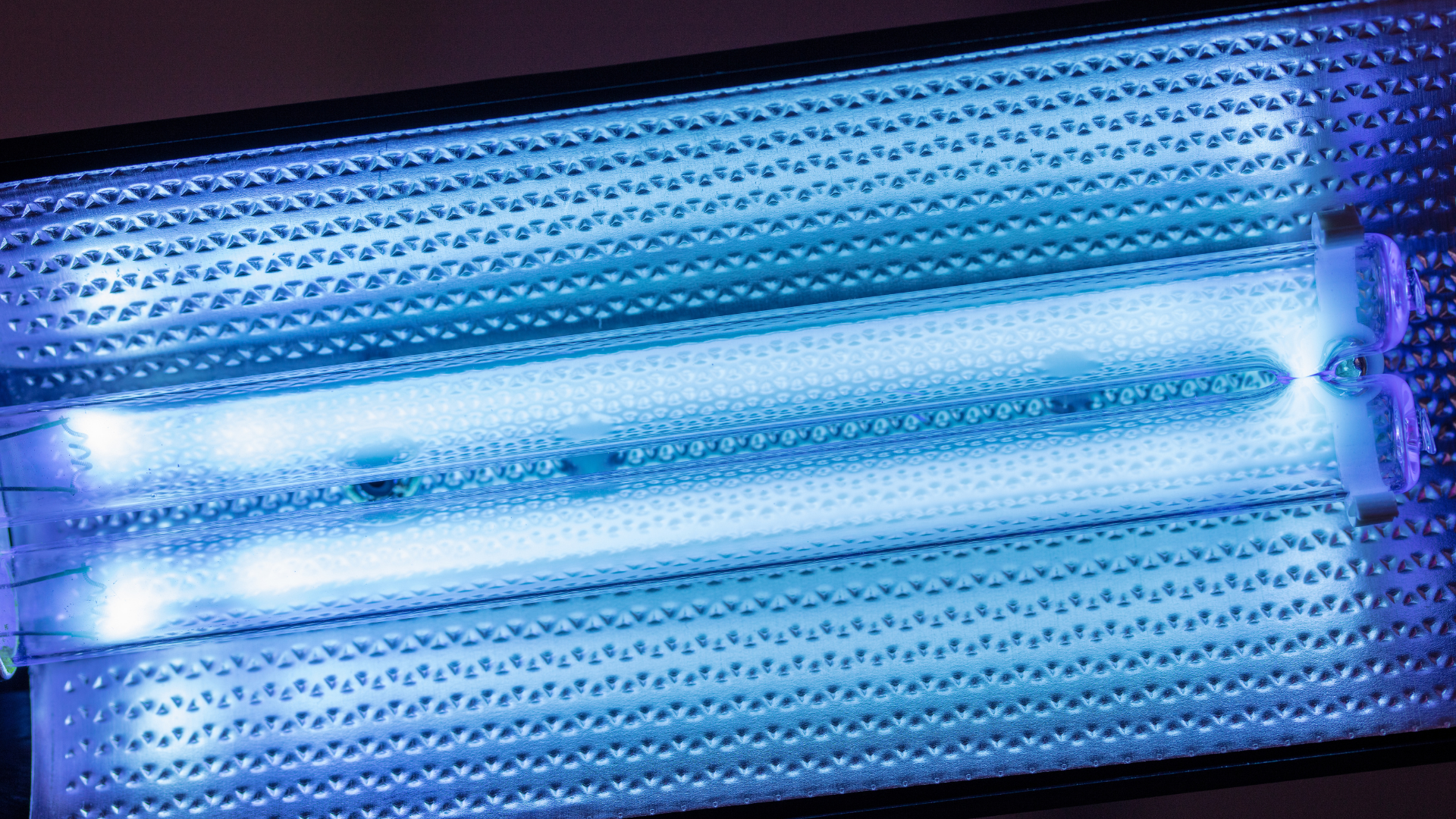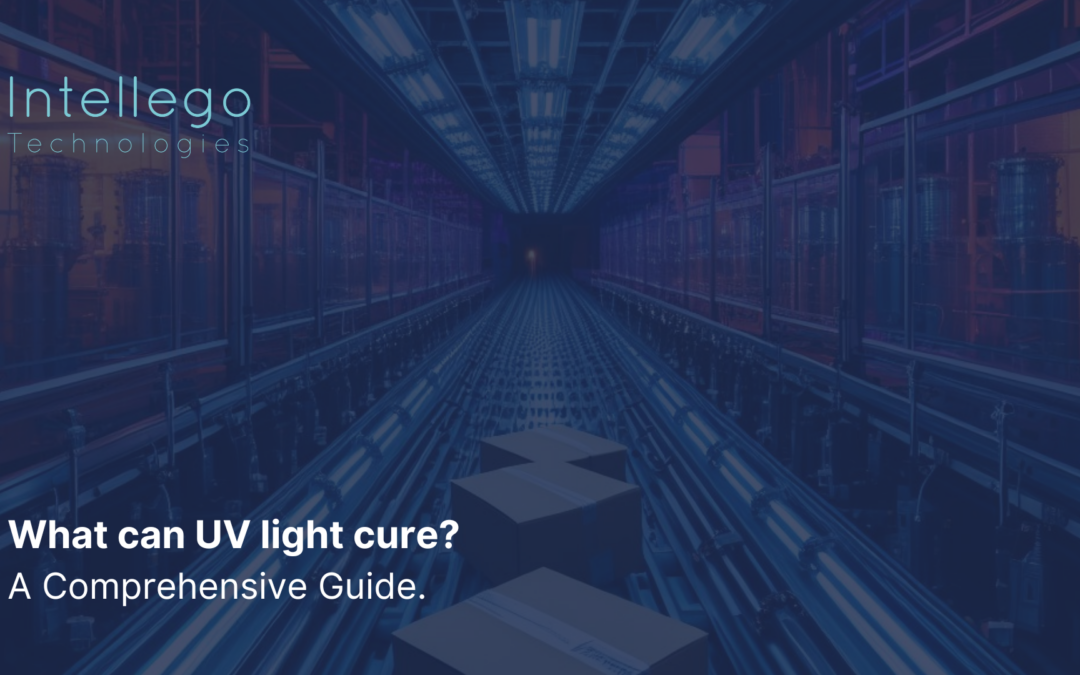UV Light
Ultraviolet (UV) light is a powerful tool for curing various materials quickly and efficiently. UV curing from inks and coatings to adhesives and sealants offers near-instantaneous results without the need for solvents or lengthy drying times. This comprehensive guide will explore the different types of UV rays used in the curing process, their respective wavelength ranges, and the wide range of applications where UV light can be effectively used.
Understanding the UV Spectrum
UV radiation is the portion of the electromagnetic spectrum between visible light and X-rays. It comprises different types of UV rays, including UVA, UVB, UVC, and UVV. Each type of UV ray has a different wavelength range and penetration depth, making them suitable for specific curing effects. Let’s delve into each type of UV ray and its uses in the curing process.
UVA Rays & Wavelength Range
UVA rays occupy the longest wavelength range, from 315 nm to 400 nm. These rays are widely used in general UV curing applications, providing excellent adhesion properties for inks, coatings, and adhesives. Additionally, UVA rays are utilized for inspection and UV fluorescing applications. Their ability to penetrate substrates effectively makes them a versatile option for various curing needs.
UVB Rays & Wavelength Range
UVB rays have a wavelength range of 280 nm to 315 nm and offer deeper substrate surface penetration than UVA rays. These mid-length waves are commonly found in photoinitiators used for curing coatings, adhesives, and inks.
UVC Rays & Wavelength Range
UVC rays have the shortest wavelength, measuring from 100 nm to 280 nm. Although they offer an impressive output in the 250 nm to 260 nm range. UVC rays provide scratch-resistant properties to coatings and find applications in clear top coatings for paper and plastics, hard coatings for optical and automotive lenses, disinfection, germicidal applications, DNA cross-linking, and surface modification.
UVV Rays & Wavelength Range
Unlike the other types of UV rays, UV rays fall within the visible spectrum, ranging from 395 nm to 455 nm. These rays offer deep-level curing capabilities and are commonly used with UV/Visible formulations for adhesion properties. UVV rays are particularly effective when working with white and silver conductive pigments, coatings with TiO₂ pigments, adhesives, and deep potting compounds.

Applications of UV Rays and Wavelengths
UV curing is just one of the many applications of UV rays, which have diverse uses across industries. Here are some of the common applications where UV light is employed:
UV Curing: UV curing is widely used in industries such as printing, electronics, and automotive for quick and efficient curing of inks, coatings, adhesives, and sealants. The near-instantaneous curing provided by UV light eliminates the need for traditional solvent-based curing methods, reducing production time and costs.
Tanning/Personal Care: UV lamps are commonly used in tanning beds and booths to provide a “I’m just back from my holiday in the Maldives” look. UV light therapy is also utilized to treat various skin conditions such as acne, psoriasis, eczema, and seasonal depression.
Lighting/Illumination: UV light is utilized in various lighting applications, including blacklights, insect traps, and counterfeit detection. It is also used in specialized lighting systems for forensic investigations and artwork preservation.
Phototherapy: UV light is used in medical applications, such as phototherapy, where it treats conditions like jaundice in newborns and certain skin disorders. Controlled exposure to UV light can have therapeutic effects on the body.
Germicidal Radiation: UVC rays offer excellent germicidal properties, making them ideal for disinfection and sterilization. UV light can deactivate bacteria, viruses, and other pathogens, making it a valuable tool in water sterilization, food processing, medical, and industrial applications.
The Importance of UV Light Safety
While UV light has numerous benefits, exercising caution and prioritising safety when working with UV rays is crucial. Overexposure to harmful UVA and UVB rays can result in mild to severe sunburns and increase the risk of skin cancer. Protecting yourself from prolonged exposure to UV light by wearing appropriate protective clothing, using sunscreen with a high SPF, and limiting direct exposure is essential.

Conclusion
UV curing is a powerful and efficient method for curing inks, coatings, adhesives, and sealants. A wide range of curing effects can be achieved by harnessing the different types of UV rays, including UVA, UVB, UVC, and UVV. UV light has diverse uses across industries, from providing adhesion properties to enabling germicidal applications. However, it is vital to prioritize safety and protect oneself from overexposure to harmful UV rays. Embracing the benefits of UV light while ensuring responsible usage is the key to unlocking its full potential in various applications
For more information on UV curing, visit Intellego Technologies – your trusted partner in health technology and UV solutions.
About Intellego Technologies AB
Intellego Technologies is a research and development company, headquartered in Solna, Sweden. Founded in 2011, Intellego has grown to become the global leader in colorimetric indicators that are utilized worldwide to visually validate the dose of ultraviolet irradiation delivered to surfaces. Through its patented photochromic technology, Intellego manufactures standard and customized indicators that make the benefits of ultraviolet light visible and promotes the safe, effective and efficient use of UV applications. Intellego’s products support better outcomes with ultraviolet devices in healthcare, food and beverage manufacturing, environmental services, and more. For more information about Intellego, visit Intellego-Technologies.com. For more information on Intellego’s line of colorimetric indicators, visit UVCdosimeters.com.

